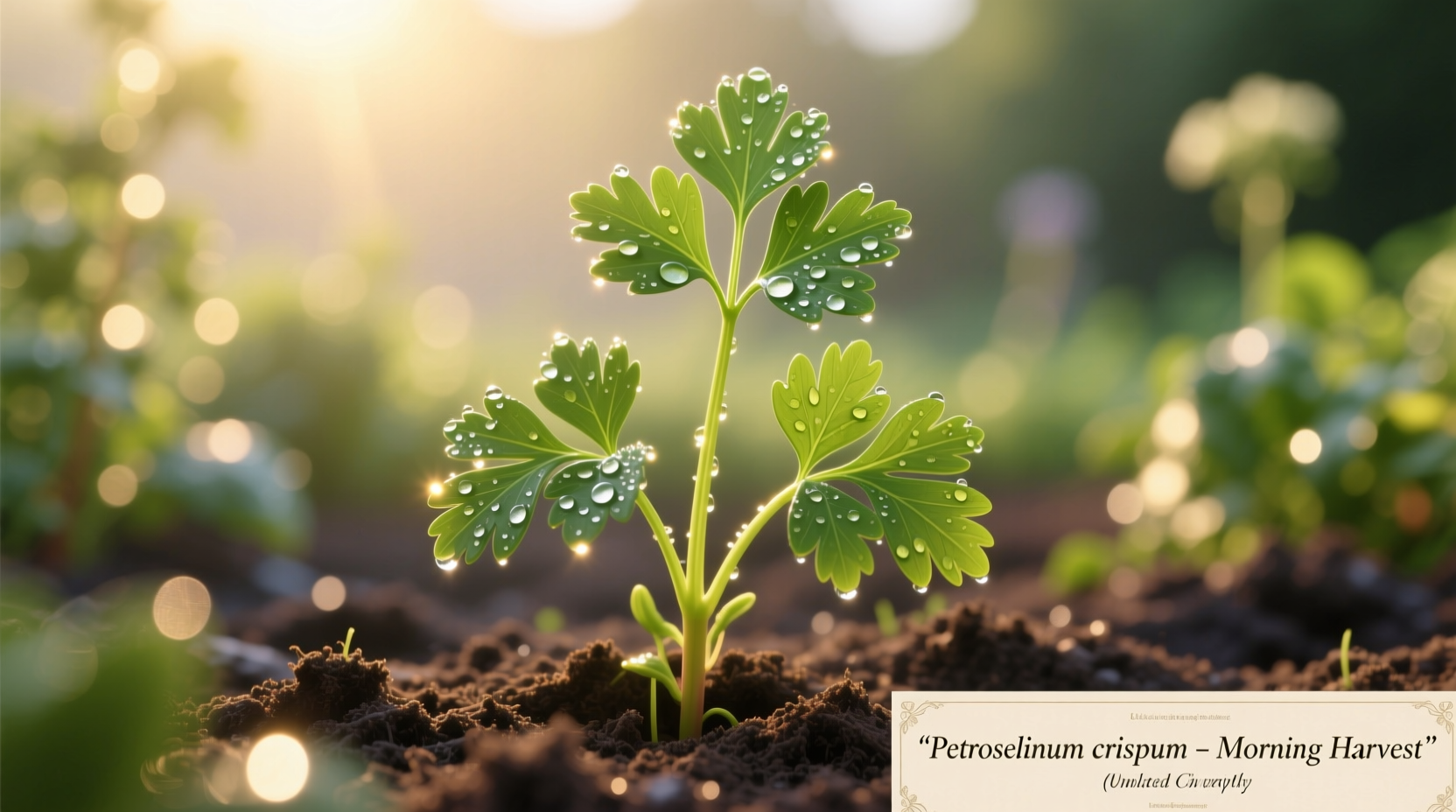Grow Perfect Parsley: Your Complete Cultivation Guide
Nothing elevates dishes like fresh parsley plucked straight from your garden. As a French chef who's worked with Michelin-starred kitchens across Europe, I've seen how homegrown parsley transforms ordinary meals into extraordinary experiences. This guide delivers exactly what you need to cultivate vibrant, flavorful parsley—whether you're a first-time gardener or expanding your herb collection.
Your First Steps: Choosing the Right Parsley Variety
Before planting, select the variety that matches your culinary needs. Curly parsley offers decorative appeal and mild flavor, while Italian (flat-leaf) parsley delivers the robust taste preferred by professional chefs. Both types share similar growing requirements but differ in appearance and culinary applications.
| Variety | Flavor Profile | Best For | Growth Habit |
|---|---|---|---|
| Curly Parsley | Mild, slightly bitter | Garnishes, soups | Bushy, compact (8-10" tall) |
| Italian (Flat-Leaf) | Strong, earthy | Cooking, sauces | Upright (12-18" tall) |
| Hamburg (Root) | Earthy, celery-like | Root vegetable dishes | Large taproot development |
According to the USDA Agricultural Research Service, Italian parsley contains 20% more essential oils than curly varieties, explaining its superior flavor in cooked dishes (USDA ARS). This makes it the preferred choice for serious home cooks despite being slightly more challenging to grow.
Planting Timeline: When and How to Start
Parsley's slow germination requires strategic timing. Begin seeds indoors 8-10 weeks before your last expected frost date for a head start. The University of California Cooperative Extension confirms that parsley seeds can take 2-5 weeks to germinate—significantly longer than most herbs (UCCE).
Follow this planting sequence for success:
- Soak seeds overnight to improve germination rates
- Plant 1/4 inch deep in seed-starting mix
- Maintain soil temperature at 70°F (21°C)
- Provide consistent moisture (never soggy soil)
- Transplant outdoors after hardening off seedlings
Direct sowing works in warmer climates once soil reaches 70°F. Space plants 6-8 inches apart in rows 12 inches apart. Remember that parsley develops a long taproot—choose deep containers (at least 10 inches) if growing in pots.
Creating the Perfect Growing Environment
Successful parsley cultivation depends on these critical factors:
Soil Requirements
Prepare soil with 2-3 inches of compost worked into the top 6-8 inches. Parsley prefers slightly acidic to neutral pH (6.0-7.0). The Royal Horticultural Society recommends adding bone meal to support root development during planting (RHS).
Sunlight Needs
Provide 6-8 hours of direct sunlight daily. In hot climates (zones 8+), offer afternoon shade to prevent bolting. Container-grown plants can be moved to optimize light exposure throughout the growing season.
Watering Strategy
Maintain consistent moisture—water when top inch of soil feels dry. Avoid overhead watering to prevent fungal diseases. Mulch with straw or shredded leaves to retain moisture and regulate soil temperature.

Avoiding Common Cultivation Mistakes
Even experienced gardeners encounter these parsley pitfalls:
Slow Germination Issues
Parsley's natural germination inhibitors cause delayed sprouting. Combat this by:
- Soaking seeds 24 hours before planting
- Using bottom heat (seedling mats)
- Keeping soil consistently moist but not waterlogged
Yellowing Leaves
This common problem indicates:
- Overwatering (most frequent cause)
- Nitrogen deficiency (apply fish emulsion)
- Root-bound container plants (repot immediately)
Harvesting for Maximum Flavor and Regrowth
Timing your harvest properly ensures continuous production:
- Wait until plants have 10+ leaves before first harvest
- Always cut outer stems first, 1-2 inches above soil line
- Harvest in morning when essential oils are most concentrated
- Never remove more than 1/3 of the plant at once
Regular harvesting encourages bushier growth. For winter storage, freeze leaves in olive oil cubes or dry using a food dehydrator at 95°F (35°C).
Seasonal Care Guide
Parsley performs differently throughout the year:
- Spring: Plant after last frost, protect from late cold snaps
- Summer: Provide afternoon shade in hot climates, watch for aphids
- Fall: Flavor intensifies after light frosts, mulch heavily for winter
- Winter: In zones 6+, harvest protected plants after snow melts
Remember that parsley is a biennial—it typically produces best in its first year. Many gardeners treat it as an annual for optimal flavor, though it can survive two growing seasons in mild climates.











 浙公网安备
33010002000092号
浙公网安备
33010002000092号 浙B2-20120091-4
浙B2-20120091-4